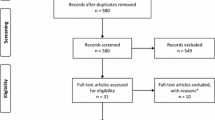Summary
This phase III, prospective, randomised, open, controlled clinical trial compared the efficacy of single-dose cefminox (2g) versus triple-dose cefoxitin (2g every 4 hours) as antibiotic prophylaxis in 112 women undergoing gynaecological surgery (vaginal or abdominal hysterectomy). Peak, intraoperative and trough serum concentrations were determined for both antibiotics, as well as their concentrations in myometrial tissue in a subset of patients from the study (22 patients from the cefminox group and 18 from the cefoxitin group). Clinical response was satisfactory in all women treated with cefminox (59 of 59) and in 52 of 53 patients treated with cefoxitin. Fever-related morbidity, hospital stay and adverse reactions were similar in both groups. Peak serum concentrations were 132.3 mg/L for cefminox and 82.2 mg/L for cefoxitin. 12-hour concentrations were 2.82 mg/L for cefminox and 2.17 mg/L for cefoxitin, and were higher than the respective minimum inhibitory concentrations (MICs) for pathogens commonly associated with this pathology. Uterine tissue concentrations were 24.5 and 41.6 mg/L for cefminox and cefoxitin, respectively, and also clearly exceeded MIC. It was shown that the use of a single preoperative dose of cefminox was similar in efficacy to 3 doses of cefoxitin administered every 4 hours, and that the serum and tissue concentrations attained provide adequate antibiotic coverage. In view of the general trend towards the use of a single dose for prophylaxis, cefminox offers a new alternative for antibiotic prophylaxis in gynaecological surgery.
Similar content being viewed by others
References
Roy S, Wilkins J, Azen C. Comparative efficacy and safety of cefmetazole or cefoxitin in the prevention of postoperative infection following vaginal and abdominal hysterectomy. J Antimicrob Chemother 1989; 23 Suppl D: 109–17
Richards WR. An evaluation of the local use sulfonamides drugs in certain gynecological operations. Am J Obstet Gynecol 1943; 46: 541–5
Goosember J, Emich JP, Schwarts RH. Prophylactic antibiotics in vaginal hysterectomies. Am J Obstet Gynecol 1969; 105: 503–6
Allen JM, Rampone JF, Wheeless CR. Use of prophylactic antibiotic in elective major gynecologic operations. Obstet Gynecol 1972; 39: 218–24
Ledger WJ, Gee L, Lewis WP. Guidelines for antibiotic prophylaxis in gynecology. Am J Obstet Gynecol 1975; 121: 1038–45
Davi E, Ausin J, Escofet C, et al. Cefoxitin versus placebo in the prophylaxis of postoperative infection in abdominal hysterectomy. Arch Gynecol Obstet 1985; 237: 377
Galask RP. Vaginal flora and its role in disease entities. Clin Obstet Gynecol 1976; 19: 61–81
Gorbach SH. Anaerobic microflora of the cervix in healthy women. Clin Obstet Gynecol 1973; 117: 1053–75
Sweet RL, Gibbs RS. Infectious disease of the female genital tract. Baltimore: Williams and Wilkins, 1985
Gorbach SL, Condon RE, Conte JE, et al. Evaluation of new anti-infective drugs for surgical prophylaxis. Clin Infect Dis 1992; 15: S313–S338
Shapiro M. Perioperative prophylactic use of antibiotics in surgery: principles and practice. Infect Control 1982; 3: 38–40
Clasen DC, Evans RS, Pestotnik SL, et al. The timing of prophylactic administration of antibiotics and risk of surgical wound infection. N Engl J Med 1992; 326: 281–6
Wenzel RP. Preoperative antibiotic prophylaxis. N Engl J Med 1992; 326: 337–9
Mandell G, Douglas G, Bennet J. Manual de terapeútica anti-microbiana. Principios y práctica de las enfermedades infecciosas. Ed Panamericana 1992; 6: 88–9
Martínez Beltrán J, Loza E, Ródenas E, et al. Cefminox (MT Mi). Comparative activity with other cephamycins in bacteremic isolates. In: American Society for Microbiology, Program and Abstracts of the 30th Interscience Conference on Antimicrobial Agents and Chemotherapy [abstract 875]. Atlanta, GA; Washington, DC: American Society for Microbiology, 1990; 232
Aguilar L, Esteban C, Frías J, et al. Cefminox: Correlation between in vitro susceptibility and pharmacokinetics and serum bactericidal activity in healthy volunteers. J Antimicrob Chemother 1994; 33: 91–101
Ito K, Hayasaki M, Tamaya T. Pharmacokinetics of cephem antibiotics in exudate of pelvic retroperitoneal space after radical hysterectomy and pelvic lymphadenectomy. Antimicrob Agents Chemother 1990; 34: 1160–4
Naranjo CA, Bustos V, Sellers EM et al. A method for estimating the probability of adverse drug reactions. Clin Pharmacol Ther 1981; 30: 239–45
Shinkai S, Ogawa T, Fujita M, et al. The studies on assay method of MT-141 levels in biological fluids. Chemotherapy Tokyo 1984; 32 (5 Suppl.): 59–66
Quintiliani R, Nightingale Ch, Stevens RC, et al. Comparative pharmacokinetics of cefotetan and cefoxitin in patients undergoing hysterectomies and colorectal operations. Am J Surg 1988; 155(5A): 67–70
Alexander DEP, Becker JM. Cefoxitin disposition in colorectal surgery. Ann Surg 1988; 208: 162–8
Hyatt JM, McKinnon PS, Zimmer GS, et al. The importance of pharmacokinetic/pharmacodynamic surrogate markers to outcome: focus on antibacterial agents. Clin Pharmacokinet 1995; 28/2: 143–60
Sawchuk RJ, Zaske DE, Cipolle RJ, et al. Kinetic model for gentamicin dosing with the use of individual patient parameters. Clin Pharmacol Ther 1977; 21: 362–9
White RL, Nightingale CH, Quintiliani R, et al. Serum and tissue concentrations of cefoxitin and cefotaxime in women undergoing hysterectomy. Drugs 1988; 35 (Suppl. 2): 72–7
Hemsell DL. Prophylactic antibiotics in gynecologic and obstetric surgery. Rev Infect Dis 1991; 13 (10 Suppl.): S821–41
Kamiya I, Nishio M, Murata S, et al. A novel method to predict the elimination half lives and the renal excretion mechanisms of cephalosporins. J Pharm Dyn 1984; 7: 545–55
Nakawaga K, Koyama M, Miyazaki M, et al. Phase I clinical study of MT-141. Chemotherapy Tokyo 1984; 32 (5 Suppl.): 104–13
Brogden R, Heel R, Speight T, et al. Cefoxitin: a review of its antibacterial activity, pharmacological properties and therapeutic use. Drugs 1979; 17: 1–37
Mandell GL, Bennet JE, Dolin R. Principles and practice of infectious diseases. Churchill Livingstone Inc 1995. Part IV Sec C: 2749
Díez M, Ruíz-Feliu B, Ródenas E, et al. Single dose cefminox versus triple-dose cefoxitin as antimicrobial prophylaxis in surgical treatment of patients with colorectal cancer. Curr Ther Res 1996; 57(7): 559–65
Author information
Authors and Affiliations
Rights and permissions
About this article
Cite this article
Garrido, R., Novo, A., Quintana, S. et al. Cefminox versus Cefoxitin in Hysterectomy Prophylaxis. Clin. Drug Invest. 13, 317–325 (1997). https://doi.org/10.2165/00044011-199713060-00004
Published:
Issue Date:
DOI: https://doi.org/10.2165/00044011-199713060-00004




